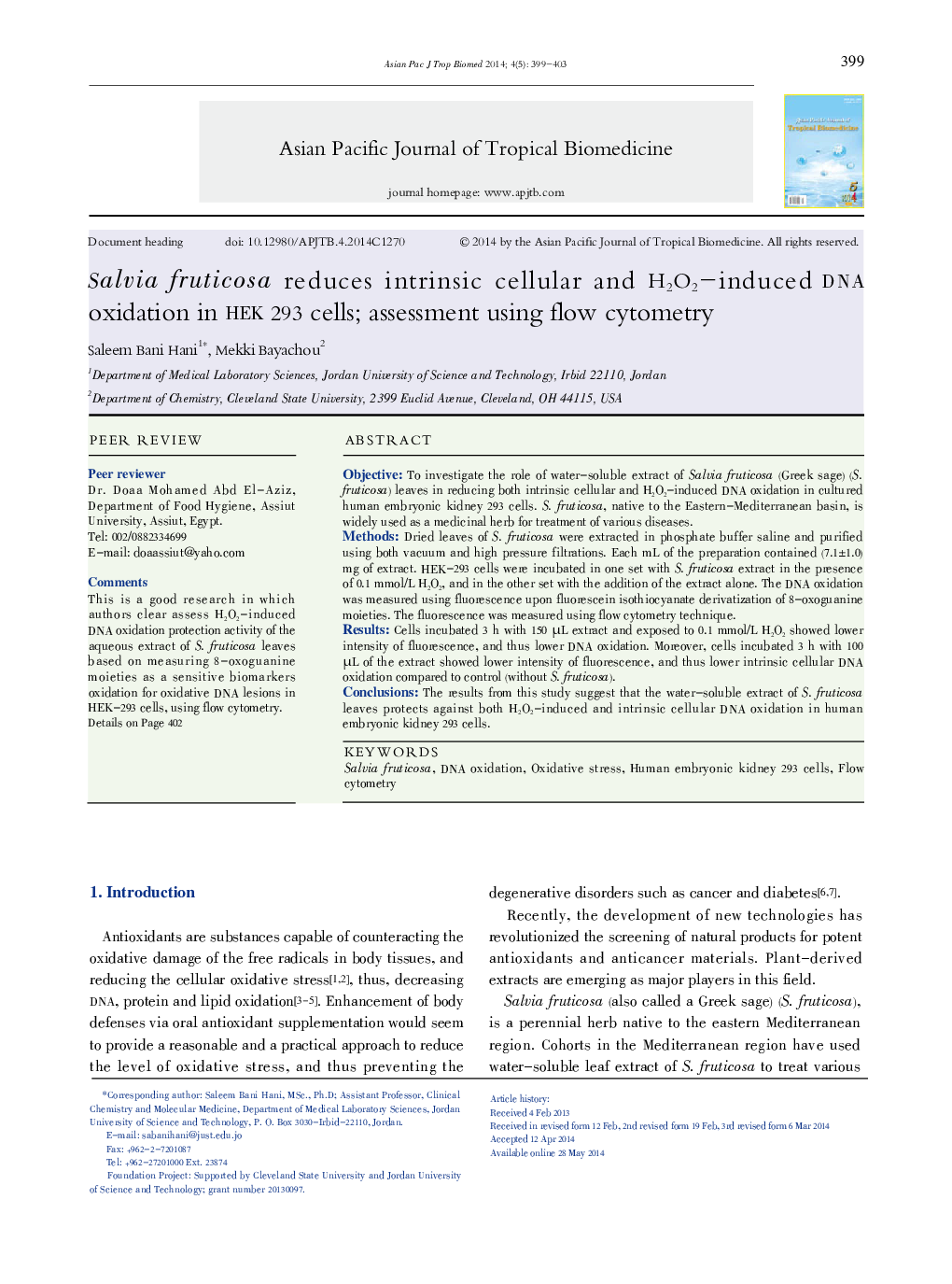| کد مقاله | کد نشریه | سال انتشار | مقاله انگلیسی | نسخه تمام متن |
|---|---|---|---|---|
| 2032990 | 1542889 | 2014 | 5 صفحه PDF | دانلود رایگان |

ABSTRACTObjectiveTo investigate the role of water-soluble extract of Salvia fruticosa (Greek sage) (S. fruticosa) leaves in reducing both intrinsic cellular and H2O2-induced DNA oxidation in cultured human embryonic kidney 293 cells. S. fruticosa, native to the Eastern-Mediterranean basin, is widely used as a medicinal herb for treatment of various diseases.MethodsDried leaves of S. fruticosa were extracted in phosphate buffer saline and purified using both vacuum and high pressure filtrations. Each mL of the preparation contained (7.1×1.0) mg of extract. HEK-293 cells were incubated in one set with S. fruticosa extract in the presence of 0.1 mmol/L H2O2, and in the other set with the addition of the extract alone. The DNA oxidation was measured using fluorescence upon fluorescein isothiocyanate derivatization of 8-oxoguanine moieties. The fluorescence was measured using flow cytometry technique.ResultsCells incubated 3 h with 150 μL extract and exposed to 0.1 mmol/L H2O2 showed lower intensity of fluorescence, and thus lower DNA oxidation. Moreover, cells incubated 3 h with 100 μL of the extract showed lower intensity of fluorescence, and thus lower intrinsic cellular DNA oxidation compared to control (without S. fruticosa).ConclusionsThe results from this study suggest that the water-soluble extract of S. fruticosa leaves protects against both H2O2-induced and intrinsic cellular DNA oxidation in human embryonic kidney 293 cells.
Journal: Asian Pacific Journal of Tropical Biomedicine - Volume 4, Issue 5, May 2014, Pages 399–403